
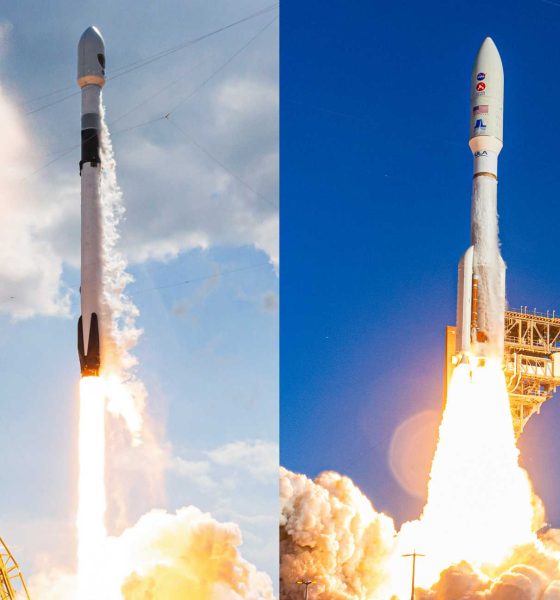
News
SpaceX Falcon 9 launch up next after ULA spy satellite mission hits snag
On Wednesday, November 3, a United Launch Alliance (ULA) Atlas V 531 rocket was set to launch the NROL-101 mission – a classified payload for the National Reconnaissance Office (NRO) of the United States government – from Space Launch Complex 41 (SLC-41) at Cape Canaveral Air Force Station. At neighboring Space Launch Complex 40 (SLC-40) a SpaceX Falcon 9 stood ready and waiting to launch a US military GPS satellite just a day later.
Ultimately, due to an anomaly with launchpad ground support equipment, the ULA launch attempt of the Atlas V NROL-101 mission was scrubbed Wednesday evening. Admittedly, the weather did not look promising either with ground winds remaining a concern throughout the countdown window.
With an hour and forty-seven minutes to go – just five seconds after a planned fifteen-minute hold was released – the launch teams announced that an anomaly had been discovered with “a ground valve issue with the liquid oxygen system for the Atlas V first stage.” The discovery initiated an immediate stop to the countdown and launch teams entered into an unplanned hold that would delay the targeted launch time.
At first, ULA conducted remote troubleshooting, but the anomaly was not remedied and a return-to-pad team would be required to enter the secured launchpad to physically investigate.
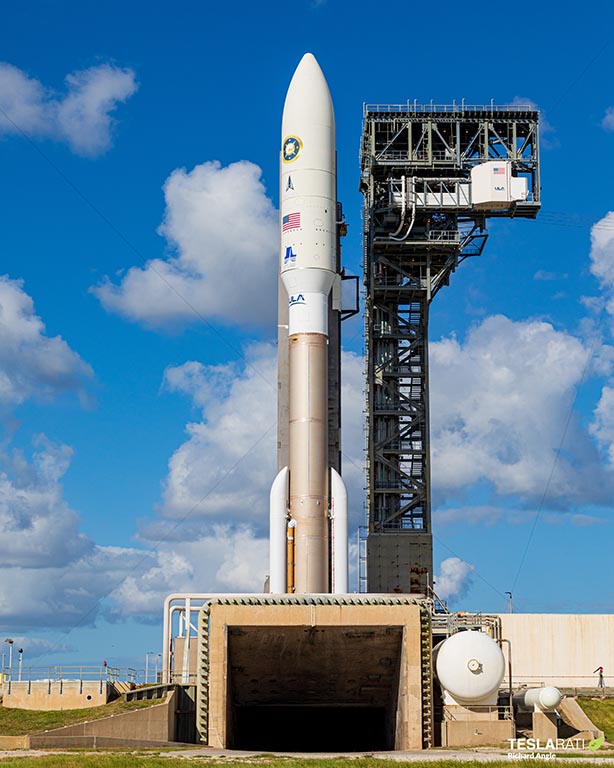
An anomaly team was deployed to investigate the valve that was restricting the flow of liquid oxygen (LOx) to the first stage of the Atlas V rocket. The hold remained for over an hour allowing the propellant lines to warm to a temperature that would be needed to be re-cooled prior to resuming the countdown.
Eventually, the return-to-pad team was able to evacuate the pad securing it for launch once again. Chill-down procedures to return the propellant lines back to an operational temperature began but were halted almost immediately. The anomaly had not been completely rectified and not enough time remained in the launch window to re-address it and re-chill the propellant lines. This led to the scrubbed launch attempt.
Typically, a scrubbed ULA mission for the NRO means that a neighboring SpaceX mission has to wait until the problem is fixed and ULA gets its rocket off of the nearby launchpad. However, that was not the case with Wednesday’s scrub. ULA stood down for a 48 hour recycle – rather than a typical 24 hour recycle – to attempt to launch the Atlas V 531 again on Friday, November 6.
This cleared the way for SpaceX to keep its targeted launch date of Thursday, November 5 during a launch window that extends approximately fifteen minutes from 6:24 – 6:39 p.m. EST (2324-2339 UTC) from SLC-40.
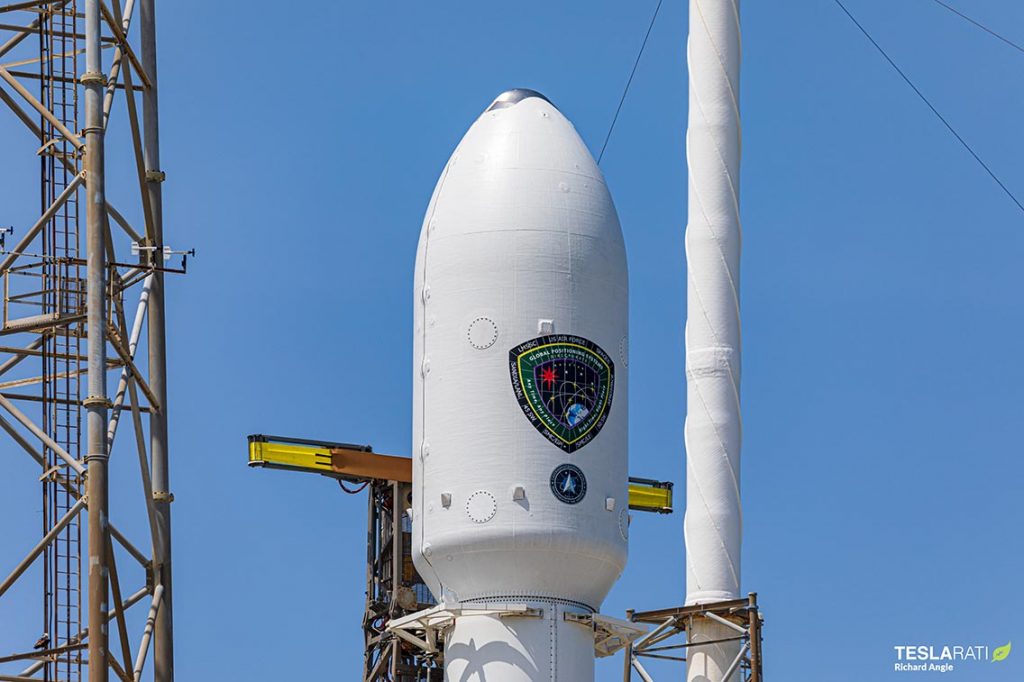
Following a successful static fire test of all nine Merlin 1D engines, SpaceX will attempt to launch the GPSIII-SV04 satellite for the United States military for a second time on Thursday, November 5.
The previous launch attempt on Friday, October 2 was thwarted at T-2 seconds due to anomalous engine start-up behavior. The unexplained early start-up of two Merlin 1D engines was eventually determined to be caused by “unexpected pressure rise in the turbomachinery gas generator” as explained by SpaceX CEO Elon Musk.
The engine anomaly prompted a thorough investigation of all Merlin 1D engines on the launch vehicle, as well as, a thorough investigation of the engines on two Falcon 9 launch vehicles designated for future NASA missions – the first operational rotation mission of the Commercial Crew Program, Crew-1, and the launch of the NASA and European Space Agency Earth-observation satellite, the Micheal Freilich Sentinel-6. Engines were eventually replaced on all three Falcon 9 launch vehicles.
A live hosted webcast of Thursday’s launch attempt will be provided on the company website and is expected to be available for viewing approximately fifteen minuted before liftoff.
Check out Teslarati’s Marketplace! We offer Tesla accessories, including for the Tesla Cybertruck and Tesla Model 3.

News
Tesla expands Robotaxi app access once again, this time on a global scale
Tesla said recently it plans to launch Robotaxi in Miami, Houston, Las Vegas, Phoenix, and Dallas.
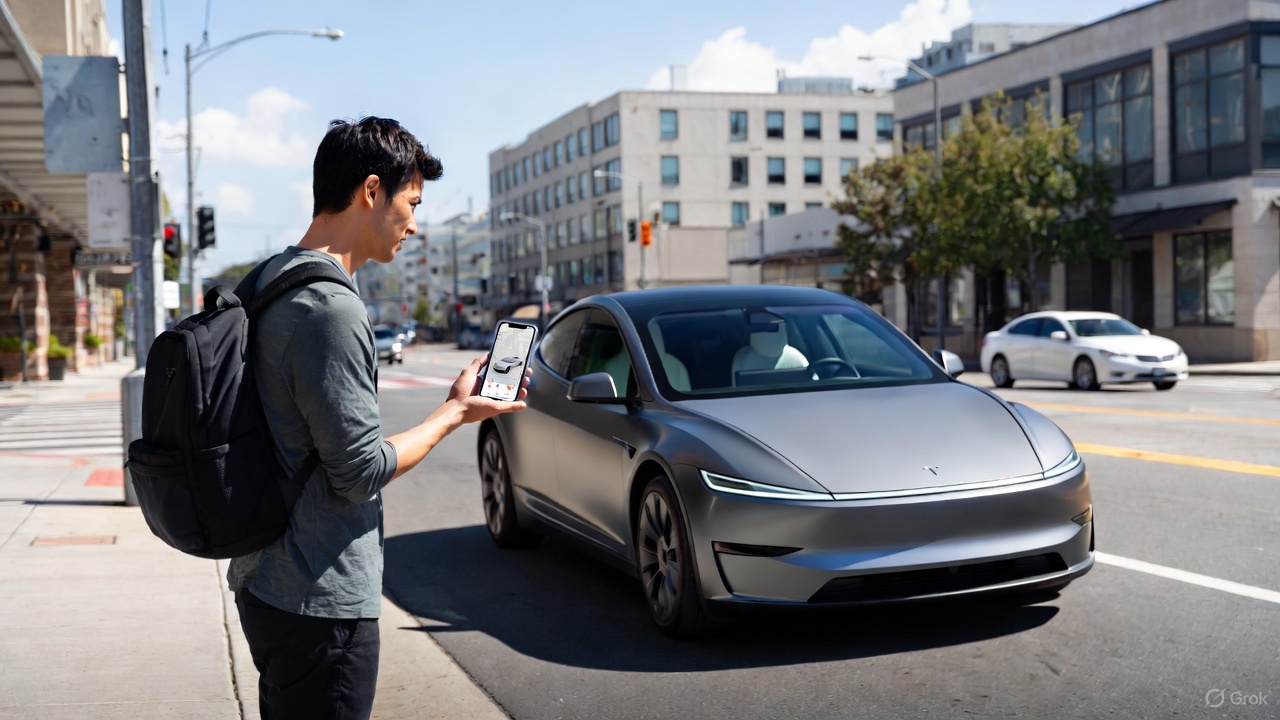
Tesla has expanded Robotaxi app access once again, but this time, it’s on a much broader scale as the company is offering the opportunity for those outside of North America to download the app.
Tesla Robotaxi is the company’s early-stage ride-hailing platform that is active in Texas, California, and Arizona, with more expansion within the United States planned for the near future.
Tesla said recently it plans to launch Robotaxi in Miami, Houston, Las Vegas, Phoenix, and Dallas.
The platform has massive potential, and Tesla is leaning on it to be a major contributor to even more disruption in the passenger transportation industry. So far, it has driven over 550,000 miles in total, with the vast majority of this coming from the Bay Area and Austin.
First Look at Tesla’s Robotaxi App: features, design, and more
However, Tesla is focusing primarily on rapid expansion, but most of this is reliant on the company’s ability to gain regulatory permission to operate the platform in various regions. The expansion plans go well outside of the U.S., as the company expanded the ability to download the app to more regions this past weekend.
So far, these are the areas it is available to download in:
- Japan
- Thailand
- Hong Kong
- South Korea
- Australia
- Taiwan
- Macau
- New Zealand
- Mexico
- U.S.
- Canada
Right now, while Tesla is focusing primarily on expansion, it is also working on other goals that have to do with making it more widely available to customers who want to grab a ride from a driverless vehicle.
One of the biggest goals it has is to eliminate safety monitors from its vehicles, which it currently utilizes in Austin in the passenger’s seat and in the driver’s seat in the Bay Area.
A few weeks ago, Tesla started implementing a new in-cabin data-sharing system, which will help support teams assist riders without anyone in the front of the car.
Tesla takes a step towards removal of Robotaxi service’s safety drivers
As Robotaxi expands into more regions, Tesla stands to gain tremendously through the deployment of the Full Self-Driving suite for personal cars, as well as driverless Robotaxis for those who are just hailing rides.
Things have gone well for Tesla in the early stages of the Robotaxi program, but expansion will truly be the test of how things operate going forward. Navigating local traffic laws and gaining approval from a regulatory standpoint will be the biggest hurdle to jump.
Investor's Corner
Tesla gets price target boost, but it’s not all sunshine and rainbows
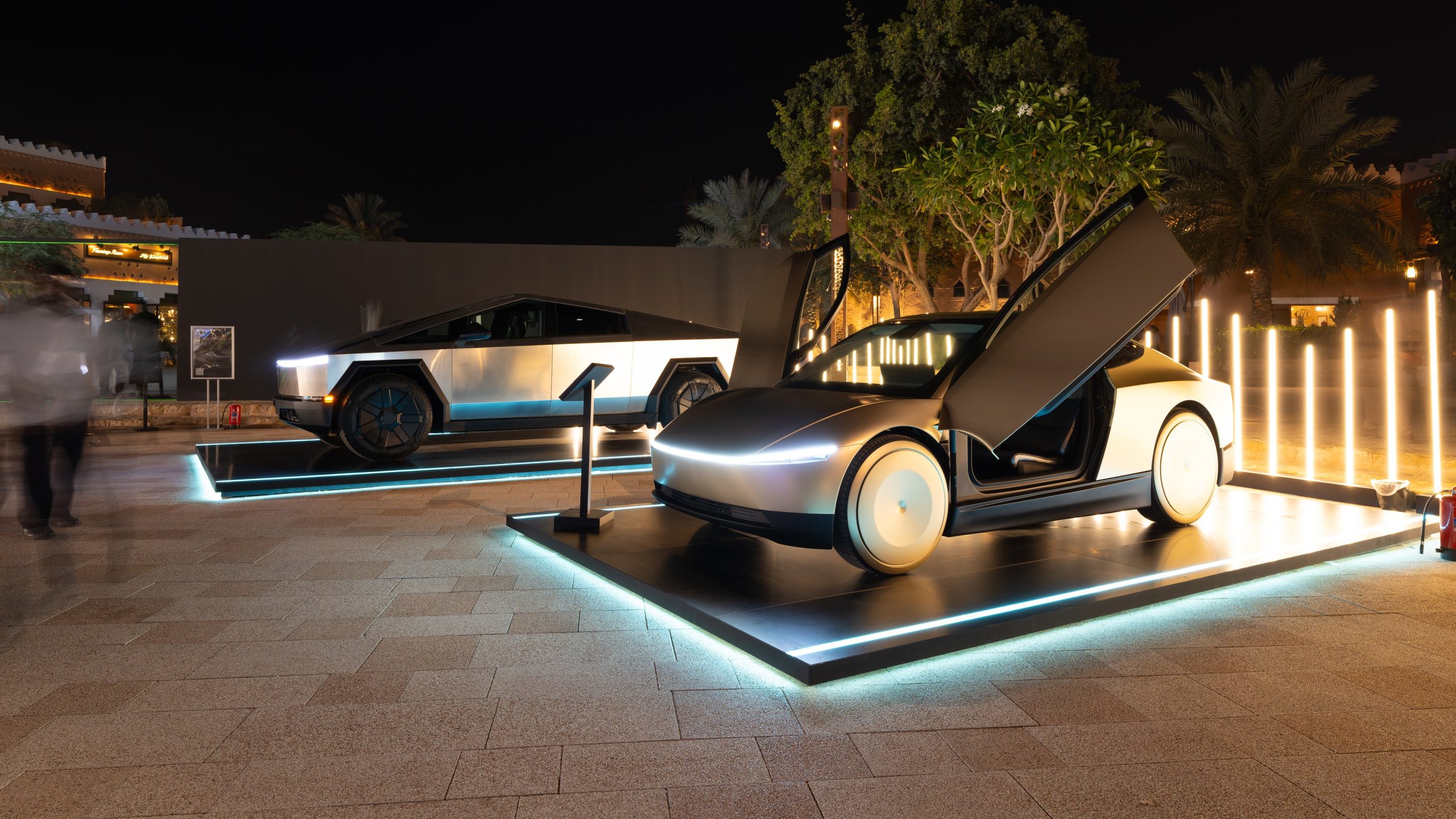
Tesla received a price target boost from Morgan Stanley, according to a new note on Monday morning, but there is some considerable caution also being communicated over the next year or so.
Morgan Stanley analyst Andrew Percoco took over Tesla coverage for the firm from longtime bull Adam Jonas, who appears to be focusing on embodied AI stocks and no longer automotive.
Percoco took over and immediately adjusted the price target for Tesla from $410 to $425, and changed its rating on shares from ‘Overweight’ to ‘Equal Weight.’
Percoco said he believes Tesla is the leading company in terms of electric vehicles, manufacturing, renewable energy, and real-world AI, so it deserves a premium valuation. However, he admits the high expectations for the company could provide for a “choppy trading environment” for the next year.
He wrote:
“However, high expectations on the latter have brought the stock closer to fair valuation. While it is well understood that Tesla is more than an auto manufacturer, we expect a choppy trading environment for the TSLA shares over the next 12 months, as we see downside to estimates, while the catalysts for its non-auto businesses appear priced at current levels.”
Percoco also added that if market cap hurdles are achieved, Morgan Stanley would reduce its price target by 7 percent.
Perhaps the biggest change with Percoco taking over the analysis for Jonas is how he will determine the value of each individual project. For example, he believes Optimus is worth about $60 per share of equity value.
He went on to describe the potential value of Full Self-Driving, highlighting its importance to the Tesla valuation:
“Full Self Driving (FSD) is the crown jewel of Tesla’s auto business; we believe that its leading-edge personal autonomous driving offering is a real game changer, and will remain a significant competitive advantage over its EV and non-EV peers. As Tesla continues to improve its platform with increased levels of autonomy (i.e., hands-off, eyes-off), it will revolutionize the personal driving experience. It remains to be seen if others will be able to keep pace.”
Additionally, Percoco outlined both bear and bull cases for the stock. He believes $860 per share, “which could be in play in the next 12 months if Tesla manages through the EV-downturn,” while also scaling Robotaxi, executing on unsupervised FSD, and scaling Optimus, is in play for the bull case.
Will Tesla thrive without the EV tax credit? Five reasons why they might
Meanwhile, the bear case is placed at $145 per share, and “assumes greater competition and margin pressure across all business lines, embedding zero value for humanoids, slowing the growth curve for Tesla’s robotaxi fleet to reflect regulatory challenges in scaling a vision-only perception stack, and lowering market share and margin profile for the autos and energy businesses.”
Currently, Tesla shares are trading at around $441.
News
Tesla Optimus dramatically collapses after teleoperator mishap
It seemed blatantly obvious that whoever was controlling the Optimus robot from behind the scenes did not disconnect their ability to manipulate its movements
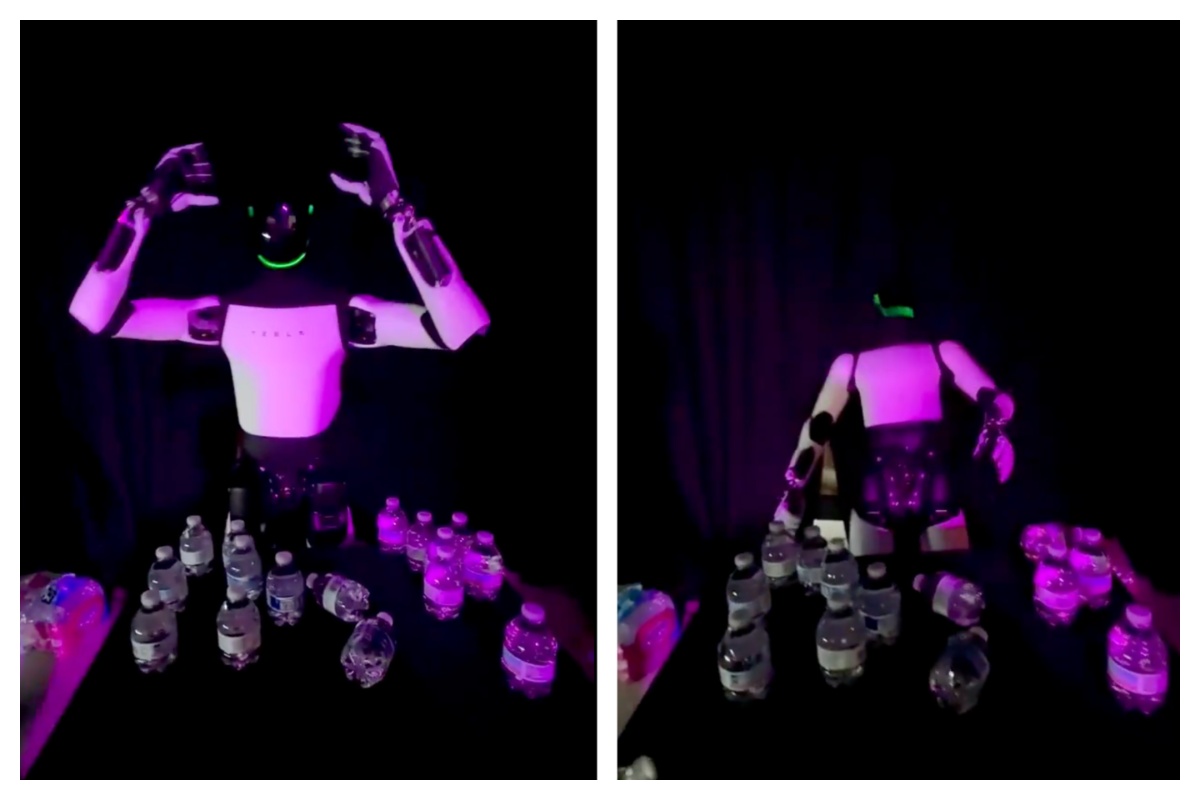
Tesla Optimus dramatically collapsed after a teleoperator mishap at the company’s “Future of Autonomy Visualized” event in Miami this past weekend.
It seemed blatantly obvious that whoever was controlling the Optimus robot from behind the scenes did not disconnect their ability to manipulate its movements, then left the controls, causing Optimus to collapse.
A video captured at the event shows Optimus doing a movement similar to taking a headset off, likely what the teleoperator uses to hear guest requests and communicate with other staff:
🚨 Tesla Optimus mishap at the Miami event
To be fair, don’t we all want to do this around the Holidays? pic.twitter.com/EJ5QKenqQd
— TESLARATI (@Teslarati) December 8, 2025
After the headset removal motion was completed, Optimus simply collapsed backward, making for an interesting bit of conversation. While it was a mishap, it was actually pretty funny to watch because of the drama displayed by the robot in the situation.
This was obviously a mistake made by the teleoperator, and does not appear to be a spot where we can put any sort of blame on Optimus. It would have likely just stood there and waited for controls to resume if the teleoperator had disconnected from the robot correctly.
However, details are pretty slim, and Tesla has not announced anything explaining the situation, likely because it seems to be a pretty face-value event.
Tesla Optimus shows off its newest capability as progress accelerates
The Tesla Optimus program has been among the most hyped projects that the company has been working on, as CEO Elon Musk has extremely high hopes for what it could do for people on Earth. He has said on several occasions that Optimus should be the most popular product of all time, considering its capabilities.
Obviously, the project is still a work in progress, and growing pains are going to be part of the development of Optimus.
In its development of Optimus Gen 3, Tesla has been working on refining the forearm, hand, and fingers of Optimus, something that Musk said is extremely difficult. However, it’s a necessary step, especially if its capabilities will not be limited by hardware.
All in all, Optimus has still been a very successful project for Tesla, especially in the early stages. The company has done an excellent job of keeping Optimus busy, as it helps with serving customers at events and the Tesla Diner, and is also performing tasks across the company’s manufacturing plants.








